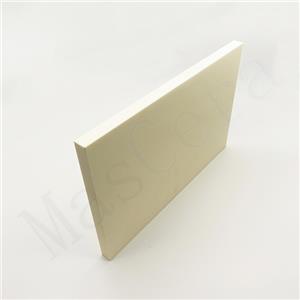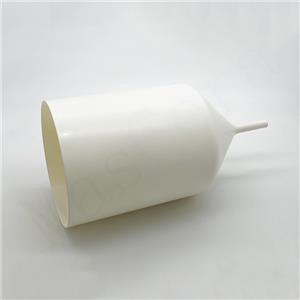Ceramic Substrate Series -Direct Bond Copper (DBC) Ceramic Substrate
With the development of electronic technology, the integration level of chips continues to increase, and the circuit wiring becomes finer. As a result, the power dissipation per unit area increases, leading to increased heat generation and potential device failures. Direct Bond Copper (DBC) ceramic substrate has become an important electronic packaging material due to its excellent thermal conductivity and electrical conductivity, especially in power modules (IGBT) and integrated power electronic modules.
I. Development of DBC Process
DBC technology is mainly based on the metallization of alumina ceramic substrates and was first introduced in the 1970s by J.F. Burgess and Y.S. Sun. In the mid-1980s, the DBC research team at General Electric (GE) in the United States made the technology practical.
After years of development, this technology has made significant breakthroughs not only in preparation processes but also in bond strength and thermal cycling fatigue life. It has also made substantial progress in the field of electronic packaging.
II. Principles of DBC Process
Direct Copper Bonding is a metallization method that directly bonds copper foil onto the surface of ceramic substrates (mainly Al2O3 and AlN). The basic principle is to introduce oxygen into the interface between copper and ceramics, and then form a Cu/O eutectic liquid phase at 1065~1083℃, which reacts with the ceramic base and copper foil to generate CuAlO2 or Cu(AlO2)2, and achieves bonding between the copper foil and the substrate with the help of the intermediate phase. Since AlN is a non-oxide ceramic, the key to depositing copper on its surface is to form a transition layer of Al2O3, which helps to achieve effective bonding between the copper foil and the ceramic substrate. The copper foil used in DBC hot-press bonding is generally thick, ranging from 100 to 600μm, and has strong current-carrying capacity, making it suitable for device sealing applications in extreme environments such as high temperature and high current. It is a well-established standard device in the field of IGBT and LD packaging, but the minimum line width on DBC surfaces is generally greater than 100μm, making it unsuitable for the production of fine circuits.

Preparation process for DBC ceramic substrate
III.Performance of DBC Ceramic Substrate
DBC ceramic substrate possesses the characteristics of high thermal conductivity, high electrical insulation, high mechanical strength, and low expansion, typical of ceramics. It also combines the high electrical conductivity and excellent solderability of oxygen-free copper, allowing for the etching of various patterns.
1. Excellent insulation performance:
Using DBC substrates as chip carriers effectively isolates the chip from the module's heat dissipation base. The Al2O3 ceramic layer or AlN ceramic layer in the DBC substrate enhances the module's insulation capability (insulation voltage > 2.5KV).
2.Outstanding thermal conductivity:
DBC substrates have excellent thermal conductivity. In the operation of IGBT modules, a significant amount of heat is generated on the chip surface. This heat can be efficiently transferred through the DBC substrate to the module's heat dissipation base, which is further conducted to the heat sink through thermal grease, achieving overall module heat dissipation.
3.Thermal expansion coefficient similar to silicon:
DBC substrates have a similar thermal expansion coefficient (7.1ppm/K) to silicon (the main material of chips). This similarity prevents stress damage to the chips. DBC substrates exhibit excellent mechanical properties, corrosion resistance, and minimal deformation, allowing for a wide range of temperature applications.
4.Good mechanical strength: Thick copper foil and high-performance ceramic materials provide DBC substrates with good mechanical strength and reliability.
5.Strong current-carrying capacity: Due to the superior electrical properties of copper conductors and their high current-carrying capacity, DBC substrates can support high power capacity.
IIII.Applications of DBC Ceramic Substrate
DBC ceramic substrates have a wide range of applications, including high-power white LED modules, UV/deep-UV LED device packaging, laser diodes (LD), automotive sensors, refrigerated infrared thermal imaging, 5G optical communications, high-end coolers, concentrated photovoltaics (CPV), microwave RF devices, and electronic power devices (IGBTs), among many other fields. Although new types of ceramic substrates like AMB and DBA have emerged, it does not mean that they can completely replace DBC. Each has its own application scenarios in terms of power and cost, and DBC still has significant market potential.
XIAMEN MASCERA TECHNOLOGY CO., LTD. is a reputable and reliable supplier specializing in manufacturing and sales of technical ceramic parts. We provide custom production and high precision machining for a wide series of high performance ceramic materials including alumina ceramic, zirconia ceramic, silicon nitride, silicon carbide, boron nitride, aluminum nitride and machinable glass ceramic. Currently, our ceramic parts can be found in many industries like mechanical, chemical, medical, semiconductor, vehicle, electronic, metallurgy etc. Our mission is to provide the best quality ceramic parts for global users and it is a big pleasure to see our ceramic parts work efficiently in customers' specific applications. We can cooperate on both prototype and mass production, welcome to contact us if you have demands.




